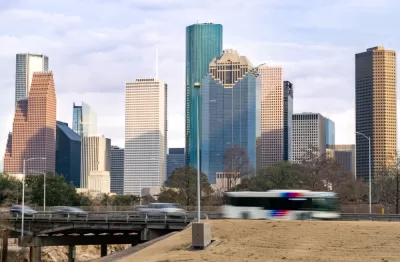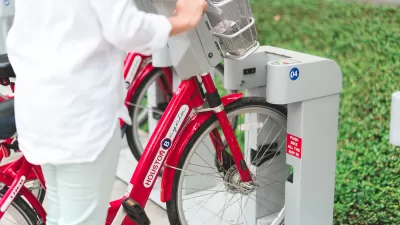The agency will assess ways to more effectively use its surface parking lots and encourage more mixed-use development near transit hubs.

Houston’s Metropolitan Transit Authority is considering developing some of its ‘park and ride’ properties(largely surface parking lots) into housing and commercial space, reports Dug Begley in the Houston Chronicle.
“The [Metro] board in August created a subcommittee tasked with joint development and land use, which met for the first time Sept. 14. Staff, meanwhile, issued a request for information to developers, the first step in seeing if any have ideas for using Metro spaces.” As Begley writes, “If Metro can find private partners to better use its land, or build on it while maintaining its use for transit, the agency can add more value than just concrete lots, and better connect its transit centers to the surrounding area.”
Encouraging development on properties adjacent to transit stations is nothing new for other agencies, such as Dallas Area Rapid Transit, which instituted a transit-oriented development policy in 1989. “Critics, however, point out that for all of DART’s attempts to drive living and retail space toward its 93 miles of light rail lines, its ridership has not benefited. A station in the developed enclave of Las Colinas, aimed at bringing urban design to a suburban setting, is among the agency's lowest in terms of daily riders.”
Elsewhere, TODs have had more success. “Washington Metropolitan Area Transit Authority long has sought out deals that put transit stations into core shopping and residential areas,” Begley points out, and the practice of integrating transit stations with other uses is common in other countries.
FULL STORY: Metro eases into land development, aiming to connect transit, housing and jobs

Planetizen Federal Action Tracker
A weekly monitor of how Trump’s orders and actions are impacting planners and planning in America.

San Francisco's School District Spent $105M To Build Affordable Housing for Teachers — And That's Just the Beginning
SFUSD joins a growing list of school districts using their land holdings to address housing affordability challenges faced by their own employees.

The Tiny, Adorable $7,000 Car Turning Japan Onto EVs
The single seat Mibot charges from a regular plug as quickly as an iPad, and is about half the price of an average EV.

As Trump Phases Out FEMA, Is It Time to Flee the Floodplains?
With less federal funding available for disaster relief efforts, the need to relocate at-risk communities is more urgent than ever.

With Protected Lanes, 460% More People Commute by Bike
For those needing more ammo, more data proving what we already knew is here.

In More Metros Than You’d Think, Suburbs are Now More Expensive Than the City
If you're moving to the burbs to save on square footage, data shows you should think again.
Urban Design for Planners 1: Software Tools
This six-course series explores essential urban design concepts using open source software and equips planners with the tools they need to participate fully in the urban design process.
Planning for Universal Design
Learn the tools for implementing Universal Design in planning regulations.
Smith Gee Studio
City of Charlotte
City of Camden Redevelopment Agency
City of Astoria
Transportation Research & Education Center (TREC) at Portland State University
US High Speed Rail Association
City of Camden Redevelopment Agency
Municipality of Princeton (NJ)





























